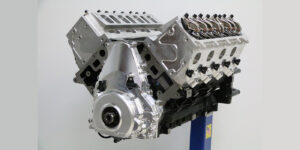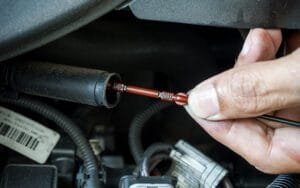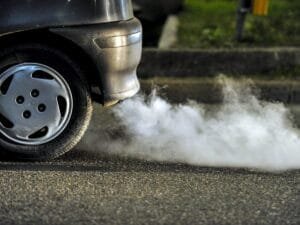The Honda Odyssey is a popular family minivan known for its comfort, reliability, and advanced safety features. Among these features is the Forward Collision Warning (FCW) system, which is designed to help drivers avoid potential collisions by providing timely alerts.
However, like any other complex automotive system, the FCW in the Honda Odyssey can sometimes experience failures or malfunctions. These issues can be concerning, especially since the FCW is crucial for ensuring safety on the road.
In this comprehensive guide, we will explore what the FCW system is, why it might fail, how to diagnose the problem, and the steps you can take to address it. We’ll also cover preventive measures to help maintain the FCW system in good working condition.
This guide aims to provide clear, practical information to help Honda Odyssey owners understand and resolve FCW system issues effectively.
What is the FCW System in a Honda Odyssey?
The Forward Collision Warning (FCW) system is a safety feature integrated into many modern vehicles, including the Honda Odyssey. The purpose of the FCW system is to monitor the road ahead and alert the driver of potential collisions with other vehicles or obstacles.
It uses a combination of cameras, radar, or lidar sensors mounted at the front of the vehicle to detect objects in its path.
When the system detects an imminent collision, it provides visual and audible warnings to the driver, prompting them to take corrective action.
In some cases, the FCW system may work in conjunction with other safety systems, such as Automatic Emergency Braking (AEB), to reduce the vehicle’s speed or apply the brakes if the driver does not react quickly enough.
The FCW system is a vital component of Honda’s safety technology, designed to reduce the risk of frontal collisions and enhance overall driving safety.
Working
To understand how the FCW system works, it’s important to know the components involved:
- Sensors: These are the eyes of the FCW system. The Honda Odyssey typically uses a combination of radar and cameras. The radar sensor, often located behind the front grille or bumper, measures the distance and speed of vehicles or objects in front. The camera, usually mounted near the rear-view mirror, helps identify the shape and size of obstacles.
- Control Unit: This is the brain of the system. It processes data received from the sensors to assess whether a collision is likely. The control unit uses complex algorithms to analyze the speed of the Odyssey, the speed of the object in front, and the closing distance to determine if a warning is necessary.
- Warning Mechanism: If the control unit determines a collision is imminent, it triggers the warning mechanism. This can be a visual alert on the dashboard, an audible warning, or even a haptic alert, such as a vibrating steering wheel or seat.
The FCW system operates continuously when the vehicle is in motion, ensuring that the driver is constantly aware of potential dangers on the road.
Common Causes
While the FCW system is designed to be reliable, there are several reasons why it might fail or malfunction. Understanding these causes can help in diagnosing and resolving issues:
- Sensor Blockage or Obstruction: One of the most common reasons for FCW system failure is blockage or obstruction of the sensors. Dirt, snow, ice, or even a misplaced bumper sticker can obstruct the radar or camera, preventing them from accurately detecting obstacles.
- Sensor Misalignment: Sensors need to be properly aligned to function correctly. If a sensor is misaligned due to an impact, such as a minor collision or hitting a pothole, it may not detect obstacles accurately, leading to system failure.
- Software Glitches: Like any electronic system, the FCW system relies on software to function. Software glitches or bugs can cause the system to behave unpredictably or fail altogether. These glitches may be due to outdated software or a temporary system error.
- Electrical Issues: Problems with the vehicle’s electrical system can also affect the FCW system. Issues such as a blown fuse, loose wiring, or a faulty control unit can lead to system malfunctions.
- Environmental Factors: Adverse weather conditions, such as heavy rain, fog, or snow, can affect the sensors’ ability to detect objects. In such conditions, the system might fail to function correctly or may give false warnings.
- Calibration Errors: The FCW system requires proper calibration to ensure accurate readings from the sensors. If the system has not been calibrated correctly after a repair or replacement of parts, it may lead to errors or failure.
How to Fix?
If your Honda Odyssey displays an “FCW System Failed” warning on the dashboard, it’s essential to diagnose the problem promptly. Here’s a step-by-step guide on how to identify the issue:
- Check for Obstructions: Start by inspecting the sensors for any visible obstructions. Clean the camera lens and radar sensor area to ensure they are free of dirt, snow, ice, or other debris. Sometimes, a simple cleaning can resolve the issue.
- Inspect for Physical Damage: Check for any signs of physical damage to the front grille, bumper, or windshield, where the sensors are typically located. Look for cracks, dents, or misalignment that could affect sensor function.
- Look for Warning Lights: Pay attention to any other warning lights or messages on the dashboard. The FCW system may be linked to other safety or stability control systems, and additional warnings could provide clues to the underlying problem.
- Use a Diagnostic Tool: If you have access to an OBD-II (On-Board Diagnostics) scanner, you can use it to check for error codes related to the FCW system. Error codes can provide specific information about what might be causing the issue.
- Test Drive Under Different Conditions: Take your Odyssey for a test drive in a safe, controlled environment. Test the FCW system under different conditions, such as varying speeds and road types, to see if the issue persists or if it occurs only under certain circumstances.
- Consult the Owner’s Manual: The owner’s manual for your Honda Odyssey may provide specific guidance on troubleshooting FCW system issues. It may also offer advice on how to reset the system or when to seek professional help.
Steps to Fix
Once you have identified the potential cause of the FCW system failure, the next step is to fix the problem. Here are some steps to consider:
- Clean and Clear the Sensors: If dirt, snow, or ice is blocking the sensors, clean them thoroughly. Use a soft cloth to wipe the camera lens and radar sensor, ensuring no residue is left behind.
- Realign or Replace Sensors: If the sensors are misaligned or damaged, they may need to be realigned or replaced. This task typically requires professional assistance from a mechanic or a dealership service center, as it involves precise calibration.
- Update Software: If the issue is due to a software glitch, updating the vehicle’s software may resolve the problem. You can check for software updates through your Honda dealership or authorized service center.
- Check Electrical Connections: Inspect the electrical connections related to the FCW system. Look for loose wires, corroded terminals, or a blown fuse. If you find any electrical issues, repair or replace the affected components.
- Reset the System: In some cases, resetting the FCW system may clear minor glitches. This can often be done by disconnecting the vehicle’s battery for a few minutes and then reconnecting it. However, consult your owner’s manual or a professional before attempting this step.
- Professional Inspection and Repair: If the above steps do not resolve the issue, it may be necessary to have a professional mechanic or a Honda dealership inspect the vehicle. They can perform a more thorough diagnostic and recommend appropriate repairs or replacements.
Preventive Measures
Preventing FCW system failures involves regular maintenance and care. Here are some tips to help keep your Honda Odyssey’s FCW system in optimal condition:
- Regular Cleaning: Keep the sensors and camera lens clean by regularly washing your vehicle. Pay special attention to the front grille, bumper, and windshield areas where the sensors are located.
- Avoid Sensor Blockages: Be mindful of where you place stickers, decals, or any other accessories that might obstruct the sensors. Ensure nothing is blocking the camera or radar sensor view.
- Routine Vehicle Maintenance: Follow the recommended maintenance schedule for your Honda Odyssey. Regular servicing helps identify potential issues early, including those that might affect the FCW system.
- Calibrate After Repairs: If your vehicle undergoes repairs involving the front bumper, grille, windshield, or any parts related to the sensors, ensure the FCW system is recalibrated. This step is crucial for maintaining sensor accuracy.
- Update Vehicle Software: Ensure that your vehicle’s software is up to date. Regular updates from Honda can include important fixes and improvements for the FCW system.
- Drive Carefully in Adverse Conditions: Be aware that the FCW system might not perform optimally in adverse weather conditions. Drive cautiously in heavy rain, fog, or snow, and be prepared to take control if the system fails to detect obstacles.
When to Seek Professional Help
While some FCW system issues can be resolved with basic troubleshooting, others may require professional assistance. Here are some situations where seeking professional help is advisable:
- Persistent Warning Lights: If the FCW warning light remains on after cleaning the sensors and resetting the system, it’s best to consult a professional.
- Physical Damage to Sensors: If you notice physical damage to the sensors or their mounting points, have a professional assess and repair the damage.
- Complex Electrical Issues: Electrical problems can be challenging to diagnose and repair. A qualified technician can properly inspect the vehicle’s electrical system and fix any faults.
- Software Issues: If a software update does not resolve the problem, the vehicle may need a more in-depth diagnostic check, which is best handled by a dealership or an experienced technician.
Conclusion
The FCW system in your Honda Odyssey is an essential safety feature that helps prevent frontal collisions by providing timely alerts. While the system is generally reliable, it can sometimes fail due to sensor blockage, misalignment, software glitches, electrical issues, or environmental factors.
By understanding how the FCW system works and following the steps outlined in this guide, you can effectively diagnose and resolve common issues. Regular maintenance, proper care, and timely repairs are key to keeping the FCW system in good working order, ensuring a safer driving experience for you and your family.
Maintaining awareness of your vehicle’s safety features and understanding how to address potential issues can greatly enhance your confidence on the road. If you experience persistent problems with the FCW system, don’t hesitate to seek professional assistance to ensure your Honda Odyssey remains in optimal condition.
By staying proactive and attentive to your vehicle’s needs, you can enjoy peace of mind and a safer driving experience for years to come.





